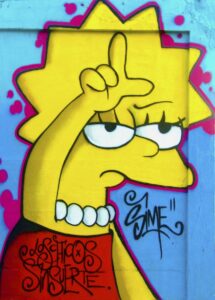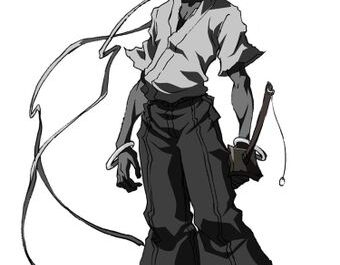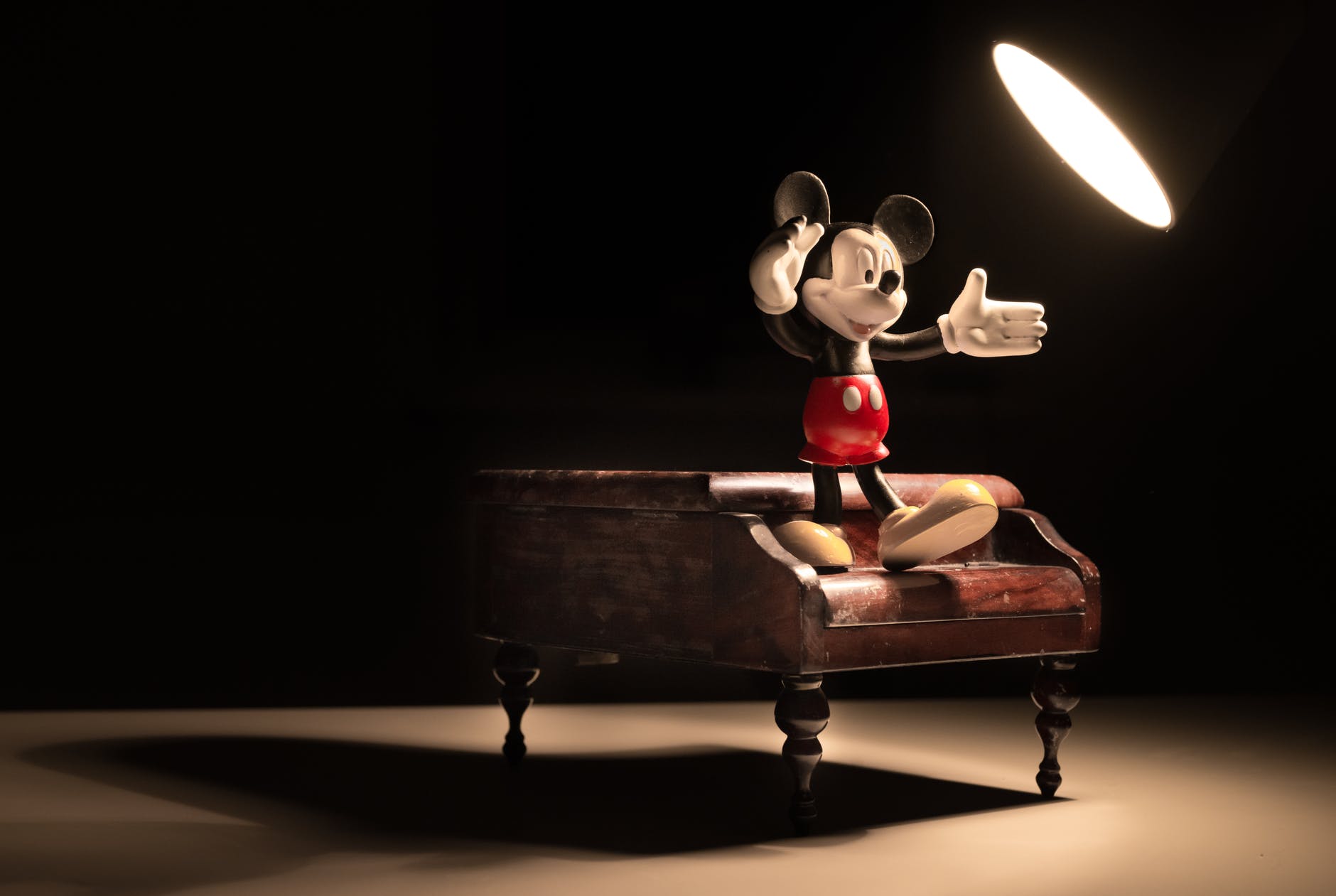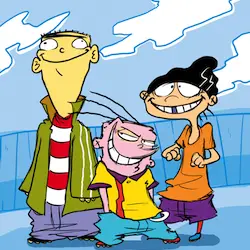Contents
Cartoons: A Cultural Phenomenon
Cartoons have been a part of popular culture for over a hundred years, with their influence felt across a wide range of entertainment media. What started as simple sketches in newspapers and comic books has grown to become a multi-billion-dollar industry, encompassing animated shows, films, video games, and merchandise.
But what exactly is a cartoon? And why are they so important to our cultural landscape?
The Definition of a Cartoon

At its most basic level, a cartoon is a drawing or series of drawings that convey meaning through humor or satire. Cartoons often feature exaggerated or simplified versions of real-life characters or situations, and can be either static (as in illustrations) or animated (as in films).
They are meant to entertain and engage viewers by providing an escape from reality or by highlighting the absurdities of everyday life. The term “cartoon” actually derives from the Italian word “cartone,” which means “big paper.” This refers to the large sheets of paper that Renaissance artists used as templates for their frescoes and murals.
Later on, the term was applied to humorous drawings that appeared in magazines and newspapers. These early cartoons often depicted political figures or social issues.
The Importance of Cartoons in Popular Culture
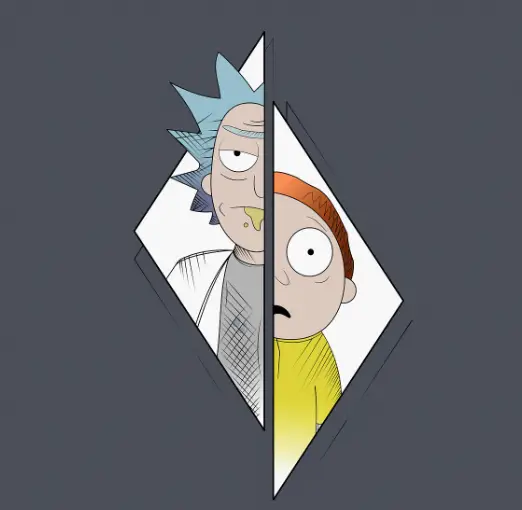
Cartoons have played an important role in shaping our cultural landscape. From classic characters like Bugs Bunny and Mickey Mouse to modern-day favorites like SpongeBob SquarePants and Rick Sanchez from Rick and Morty, cartoons have captured the imaginations of people for generations.
They provide an outlet for creativity and imagination while also reflecting societal values and concerns. In addition to their artistic value, cartoons also have significant economic importance.
The animation industry generates billions of dollars each year through movies, television shows, merchandise sales, theme parks, video games, and more. Cartoons also help sell products, as they are often used in advertisements to promote everything from cereal to cars.
A Brief History of Cartoons
Cartoons have a long and fascinating history that spans centuries. The earliest examples of cartoons can be found in prehistoric cave paintings and Egyptian hieroglyphics, which depict animals and humans in exaggerated forms.
In the Middle Ages, tapestries and manuscripts featured comic scenes that poked fun at the nobility or portrayed everyday life. The first printed cartoons appeared in the 18th century, as caricatures that mocked politicians and social mores.
The mid-19th century saw the rise of comic strips in newspapers, featuring characters like Little Nemo in Slumberland and The Yellow Kid. The first animated cartoon was created by J. Stuart Blackton in 1906, entitled Humorous Phases of Funny Faces.
Cartoons are much more than just drawings or animated films. They are a cultural phenomenon that has captivated audiences for generations.
From political satire to slapstick humor, cartoons have provided us with an outlet for creativity and imagination while also reflecting societal values and concerns. Understanding their history and impact is crucial for appreciating their continued importance in modern culture.
Early Examples of Cartoons
Cartoons have been a form of artistic expression for centuries, and some of the earliest examples can be found in the most unlikely places. From cave paintings to medieval manuscripts, cartoons have been used to tell stories, convey ideas and provide amusement. These early examples of cartoons offer a fascinating glimpse into the creativity and imagination of our ancestors.
Cave paintings and hieroglyphics

Cave paintings dating back to prehistoric times depict animals and humans in various poses. Some experts believe that these images were painted to communicate with others, while others suggest that they were simply artistic expressions. Whatever the reason, these early cartoons showcase impressive skill and creativity.
Similarly, ancient Egyptian hieroglyphics featured images that could be considered cartoon-like. These pictorial symbols were used to convey complex ideas such as emotions or actions in a simple visual language that could be easily understood.
Medieval tapestries and manuscripts
In medieval times, tapestries were an important art form that often depicted scenes from everyday life or historical events. Many of these tapestries featured cartoon-like figures with exaggerated features or playful expressions. For example, the famous Bayeux Tapestry depicts a variety of scenes from the Norman conquest of England in 1066, including knights riding horses with comically large heads.
Medieval manuscripts also often included cartoon-like illustrations alongside text. These illustrations served as decorative elements but also helped to illustrate concepts or stories for readers who might not have been able to read themselves.
Early printed books and broadsheets
With the invention of printing press came an explosion in cartoonish illustrations appearing ever more frequently in printed books and broadsheets (early newspaper-like publications). One example is The Merry Adventures Of Robin Hood which was published by Howard Pyle in 1883 consisting entirely out of hand-drawn ink sketches.
Political cartoons also started to appear in newspapers, particularly in the 18th and 19th centuries. These caricatures often mocked politicians and other public figures, providing a form of social commentary that was both humorous and informative.
While it is difficult to pin down exactly what constitutes a cartoon, these early examples offer some insight into the different forms they can take. From cave paintings to medieval manuscripts and modern political cartoons, this art form has been an important part of human culture for centuries.
The First Animated Cartoons
The Invention of the Zoetrope and Praxinoscope
One can trace back the history of animation to ancient times. However, the first animated cartoons are credited to devices like zoetrope and praxinoscope. The zoetrope was invented independently by both William George Horner in England and Franz von Uchatius in Austria in 1834.
It was a cylindrical device with vertical slits on its sides and small images or drawings on a paper strip inside it. By spinning the cylinder rapidly, when one looks inside through the slits, they could see the drawings appear to be moving.
A few years later, in 1877, Charles-Émile Reynaud introduced another such device – praxinoscope – which worked similarly to a zoetrope but used mirrors instead of slits. Reynaud’s invention provided a smoother and more stable animation as compared to zoetropes.
The First Animated Films by Émile Reynaud
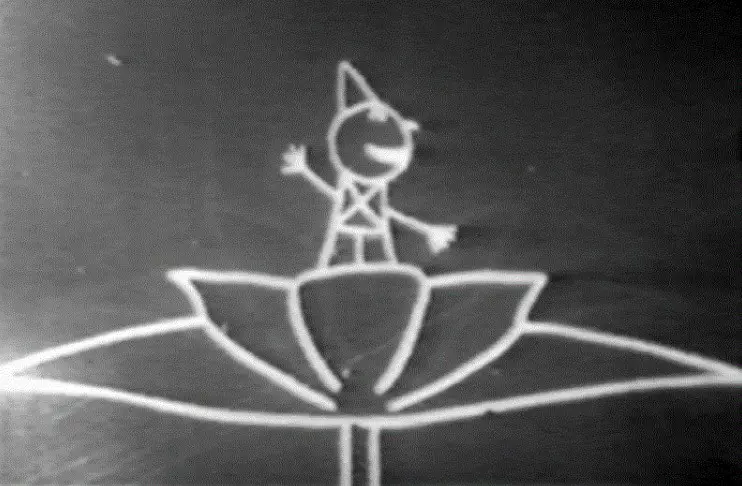
Émile Reynaud is credited with creating one of the first-ever animated films called Pauvre Pierrot (Poor Pierrot), which he screened at Musée Grévin in Paris in October 1892 using his invention called Theatre Optique.
The film consisted of over 500 individually painted images that were projected onto a screen using his Praxinoscope projector.
Reynaud continued making several more animated films using his Theatre Optique until 1900 when he was forced into bankruptcy due to competition from other cinemas.
The Development of Stop-Motion Animation by J Stuart Blackton
Stop-motion animation is an animation technique that involves manipulating real-world objects frame-by-frame to create an illusion of movement. This technique was developed by J Stuart Blackton who is considered as one of the pioneers of American animation industry.
Blackton’s first stop-motion animation was The Humpty Dumpty Circus (1898), a film that featured toy circus figures coming to life and performing circus acts. He later went on to create several other innovative films such as The Enchanted Drawing (1900), which included live-action footage of a hand sketching a cartoon character that comes to life.
The zoetrope, praxinoscope, and stop-motion animation techniques played a significant role in the development of animated cartoons. The work of Émile Reynaud and J Stuart Blackton added new dimensions to the world of animation and paved the way for future animation technologies.
The Legacy of Gertie the Dinosaur in Animation History
Creation and Impact of Gertie
Gertie the Dinosaur is widely considered to be the first character-driven animated film, created by Winsor McCay in 1914. It tells the story of a friendly dinosaur named Gertie who interacts with her creator and audience through animation. McCay’s groundbreaking creation was inspired by his talent for drawing and his love for live performances.
He spent months developing Gertie’s character and movements, using complex techniques such as keyframe animation, in which each frame is carefully drawn to create a smooth and lifelike movement. Gertie premiered at the Palace Theater in New York City on February 8, 1914, to widespread acclaim.
Audiences were amazed by the realistic movements of the animated dinosaur and applauded enthusiastically during her interactions with McCay on stage. The success of Gertie paved the way for future animated films that would showcase fully realized characters with personalities and emotions.
Winsor McCay’s Influence on Animation
Winsor McCay was a pioneer in the field of animation, setting new standards for creativity and artistic expression that continue to inspire animators today. His work on Gertie showcased his innovative use of animation techniques such as keyframe animation, multiplane cameras, and cel animation.
McCay also influenced other artists with his skillful use of perspective and attention to detail. His work had a profound impact on future animators like Walt Disney, who admired his ability to create compelling characters that resonated with audiences.
In addition to his contributions to animation, McCay was also a gifted comic strip artist whose work included Little Nemo in Slumberland and Dreams of a Rarebit Fiend. His legacy as an artist continues to be celebrated today through exhibitions at museums around the world.
Legacy of Gertie in Animation History
Gertie’s impact on animation history cannot be overstated. It was the first animated film to feature a character with personality and emotions and paved the way for future character-driven animation. McCay’s pioneering techniques and attention to detail set new standards for the medium, inspiring generations of animators to come.
Gertie also served as a bridge between live performance and animation, as McCay would often perform alongside the animated dinosaur on stage. This combination of live performance and animation would become a popular form of entertainment in vaudeville theaters during the early 20th century.
Today, Gertie remains a beloved character in animation history, recognized as a groundbreaking work that helped shape the medium into what it is today. Its impact can be seen in everything from classic Disney films to modern-day animated television shows, testament to the enduring legacy of Winsor McCay’s masterpiece.
Political Cartoons
The Power of Political Cartoons in Shaping Public Opinion
Political cartoons have been a powerful tool for shaping public opinion for centuries. The combination of images and words can convey complex ideas and emotions quickly and effectively. In the past, political cartoons were often used to criticize political leaders or government policies, but they have also been used to support or promote certain beliefs or ideologies.
During the 18th and 19th centuries, political cartoons were a popular form of social commentary in newspapers and magazines. They were often used to criticize government officials, satirize social issues, or promote a particular political agenda.
Famous cartoonists such as Thomas Nast in America and Honoré Daumier in France were celebrated for their ability to use humor and satire to influence public opinion. During times of war or political upheaval, political cartoons can be particularly influential.
During World War II, for example, cartoonists such as Dr. Seuss created cartoons that encouraged Americans to support the war effort by buying war bonds or conserving resources. These types of cartoons helped shape public opinion and create a sense of national unity.
Famous Political Cartoonists Throughout History
Throughout history, there have been many famous political cartoonists who have used their art to influence public opinion. One of the most well-known is Thomas Nast, who worked for Harper’s Weekly during the Civil War era. He is credited with creating the modern image of Santa Claus as well as helping bring down Boss Tweed’s corrupt Tammany Hall ring through his scathing caricatures.
Another famous political cartoonist was James Gillray who lived during the late 18th century in England. He was known for his clever satire aimed at mocking politicians such as Napoleon Bonaparte, William Pitt (the Younger) and George III.
In more recent times, Herblock (Herbert Block) was one of the most influential American political cartoonists. He worked for The Washington Post for over 50 years and used his cartoons to criticize politicians such as Senator Joseph McCarthy and President Richard Nixon.
Modern-Day Political Cartoons
Today, political cartoons are still a popular form of social commentary. With the rise of social media, it is easier than ever for cartoonists to get their work seen by a wider audience. Some modern-day political cartoonists have even gained large followings on platforms such as Twitter or Instagram.
One example is Ben Garrison, an American cartoonist who has gained notoriety for his controversial political cartoons that often support conservative views. His work has been criticized by some as being racist or insensitive, but he maintains that he is simply expressing his own opinions through his art.
Another well-known modern-day political cartoonist is Steve Bell from the UK. Bell works for The Guardian newspaper and uses his cartoons to criticize politicians from all sides of the political spectrum.
In 2005, he was awarded the Political Cartoon Society’s Cartoonist of the Year award. Political cartoons have played an important role in shaping public opinion throughout history.
From Thomas Nast in the 19th century to Ben Garrison in modern times, political cartoonists have used their art to influence how people think about politics and society. Although they may sometimes be controversial or divisive, these cartoons remain a vital tool for promoting free speech and encouraging critical thinking about important issues facing our world today.
Cartoon Characters That Became Iconic
The Rise of Mickey Mouse and Betty Boop

Animated cartoons quickly became a popular form of entertainment in the early 20th century, and it wasn’t long before certain characters began to stand out as fan favorites.
Disney’s Mickey Mouse was one of the first cartoon characters to achieve widespread recognition and popularity, thanks in part to his catchy theme song (“M-I-C-K-E-Y M-O-U-S-E”) and his lovable personality.
Meanwhile, Betty Boop – created by animator Max Fleischer – proved immensely popular with audiences thanks to her flirtatious personality and iconic “boop-oop-a-doop” catchphrase.
Bugs Bunny vs. Daffy Duck: The Battle for Cartoon Supremacy
As the years went on, new cartoon characters emerged and competed for audience attention. Warner Bros.’ Bugs Bunny quickly became one of the most beloved cartoon characters of all time, with his sly wit and signature catchphrase (“What’s up, doc?”). Bugs had a rival in fellow Warner Bros. character Daffy Duck, who was known for his manic energy and frequent run-ins with Bugs. Despite their differences, both Bugs Bunny and Daffy Duck have become cultural touchstones, inspiring countless parodies and tributes over the years.
Popeye: The Sailor Man Who Won’t Back Down
Another classic animated character is Popeye the Sailor Man – a musclebound sailor with a love of spinach who always managed to save the day (and win over his lady love Olive Oyl) despite seemingly insurmountable odds. Created by comic strip artist E.C. Segar in 1929, Popeye quickly made his way onto movie screens around the world thanks to animated shorts produced by Fleischer Studios.
Influence on Popular Culture and Future Generations
The impact of these iconic cartoon characters cannot be overstated. They have not only entertained generations of viewers, but also inspired countless other works of art and media. For example, Bugs Bunny’s mischievous personality and quick wit were a key influence on the creation of the Looney Tunes cartoons, which in turn paved the way for shows like The Simpsons and Family Guy.
Meanwhile, Mickey Mouse’s longevity as a cultural icon has helped shape the entire Disney brand – from theme parks to merchandise to blockbuster movies. These characters have become more than just fictional creations – they are cultural touchstones that have played an important role in shaping popular culture as we know it today.
Technological Advancements That Changed The Way We View Cartoons
Cartoons have come a long way since their inception, and much of that advancement is due to technological advancements. One of the earliest advances was the introduction of sound in cartoons, which happened in 1928.
This allowed for the use of music and dialogue, creating a more immersive experience for viewers. In 1937, Disney introduced the multiplane camera, which allowed for more dynamic shots and gave depth to animated scenes.
This technology was used in films like Snow White and the Seven Dwarfs, which was groundbreaking at the time. In recent years, computer animation has become prevalent in cartoon making.
Pixar is one company that has been at the forefront of this technology with films like Toy Story and Finding Nemo. Computer animation allows for more realistic textures and movements as well as greater control over lighting.
How Cartoons Have Evolved To Cater To Different Audiences
Cartoons were originally geared towards children but have evolved to appeal to audiences of all ages. Adult-oriented cartoons like The Simpsons and South Park pushed boundaries with their humor and commentary on society.
Anime, a style of Japanese animation, gained popularity outside of Japan in the 1980s and has since become a global phenomenon. Many anime series are aimed at older audiences with mature themes and complex storylines.
Animated films have also shifted towards appealing to both children and adults with films like Shrek creating humor that appeals to both age groups. This shift has also led to increased recognition from award shows such as the Academy Awards where animated films now have their own category.
Future Trends In Cartoon Making
As technology advances further, it’s likely we’ll see even more realistic animations using virtual reality or augmented reality technologies. In addition, advancements in artificial intelligence may lead to more advanced and personalized animations. The use of social media platforms like YouTube has already changed the way cartoons are created and distributed.
Creators can now easily share their work with a global audience, opening up new avenues for creativity and storytelling. As society becomes more diverse, we can expect to see increased representation of different cultures in cartoons.
This includes not only characters but also storylines that reflect a wider range of experiences and perspectives. Cartoons have come a long way since their inception with technological advancements pushing the boundaries of what was once thought possible.
As audiences change, so do the stories being told through animation. With continued advancements in technology and greater diversity in representation, the future of cartoon making looks bright.
Summing It Up
Cartoons have been an integral part of popular culture for centuries, and their evolution has influenced the way we perceive and interact with media. We explored the origins of cartoons in cave paintings, medieval manuscripts, and early printed books. We also looked at the development of animated cartoons through the invention of zoetropes and praxinoscopes and the first animated films by Émile Reynaud.
We delved into the legacy of Gertie the Dinosaur and how she became a game-changer in terms of animation techniques. We also examined how cartoon characters such as Mickey Mouse, Bugs Bunny, Betty Boop, Popeye etc. have become iconic symbols ingrained in our cultural consciousness over time.
We considered how political cartoons played a crucial role in shaping public opinion throughout history. We also acknowledged how technology has changed the art form over time with 3D animation becoming increasing popular amongst modern audiences.
Understanding The Importance Of Cartoons In Culture
The history and evolution of cartoons are essential to understand because it tells us about advancements in technology as well as social changes that have occurred throughout history. Cartoons have been used as propaganda tools, entertainment mediums for children or adults alike whilst influencing fashion trends or even popular catchphrases.
Furthermore, analyzing our favorite cartoon characters reveals societal norms that exist during a specific period. For example; Bugs Bunny’s satirical humor was indicative of American society’s collective consciousness during World War II wherein they were trying to cope with war through humor.
The Future Direction Of This Art Form
The future direction for this art form is exciting because new technologies continue to emerge that enhance how we create visual media content such as Virtual Reality systems which creates more immersive experiences for viewers. Additionally,the internet has allowed creators worldwide to share their work, resulting in increased visibility for diverse voices and perspectives. With advancements in technology, animation is more accessible than ever before.
That means we can expect new innovations from creators and new ways for viewers to engage with animated content. Overall, the future of animation promises to be a dynamic and exciting arena that will continue to shape culture for years to come.


